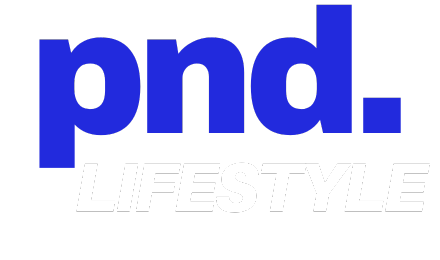Selling Custom Digital Portraits: Fun Side Hustle for Extra Cash

Selling custom digital portraits can be a rewarding side hustle for artists looking to make some extra money.
If you have a passion for art and enjoy working with digital media, this niche market offers great opportunities. Custom digital portraits are in high demand because people love personalized and unique artworks.

Setting up your online presence is crucial to reaching potential customers.
You can use platforms like Etsy or Shopify to showcase your portfolio.
Make sure your listings are clear, with detailed descriptions and high-quality images.
Engaging with your audience on social media can also help promote your work and attract new clients.
Pricing your artwork competitively and offering various options, like different portrait styles or sizes, can cater to a wider audience.
Managing your sales effectively, from receiving photos to delivering the final digital files, ensures customer satisfaction and repeat business.
Protecting your work with watermarks or copyright is essential to prevent unauthorized use.
Key Takeaways
- Custom digital portraits are a profitable side hustle due to their high demand
- Setting up a strong online presence helps attract customers and showcase your work
- Effective pricing and managing sales are crucial for business success
Understanding Your Target Audience
Before you start selling custom digital portraits, it’s crucial to know who your audience is and what they want.
This helps in creating art that resonates with them and stands out in the market.
Defining Your Niche
Your niche is what sets you apart from other artists.
To define it, look at the styles and themes you use in your work.
Are you into realistic portraits, abstract, or perhaps something more whimsical?
Once you know your niche, you can target people who appreciate that style.
This could be based on age, interests, or even location.
Understanding these demographics helps you focus your marketing efforts effectively. Finding your niche is essential for reaching the right audience.
Analyzing Market Demand
Analyzing market demand involves researching what types of digital portraits people are interested in buying.
You can do this by studying trends and seeing what’s popular on social media and art websites.
Look at what your competition is offering and how well it’s selling.
This gives you an idea of what works and what doesn’t. Tools like Google Trends and social media analytics can be helpful.
Understanding where your audience spends their time online can also help you tailor your marketing strategies effectively.
By staying updated with trends and conducting thorough market analysis, you can better meet your audience’s needs.
Setting up Your Online Presence

Getting your online presence right is key to successfully selling custom digital portraits.
This involves selecting the best platforms, optimizing your store, and developing a distinct personal brand.
Choosing the Right Platforms
You need to be where your customers are.
Setting up a shop on Etsy is a good place to start as it’s popular for handmade and custom items.
Etsy is user-friendly and has a large customer base.
Consider creating your own Shopify store to have more control over your brand and customer experience.
Shopify allows you to sell both physical and digital products.
Leverage social media.
Platforms like Instagram and Pinterest are visual and perfect for showcasing your work.
Create a business account on Instagram and a Pinterest profile to reach a larger audience.
Post regularly and use popular hashtags related to digital art.
Optimizing Your Online Store
Your shop name should be catchy and easy to remember.
This helps make a good first impression.
SEO is key.
Use relevant keywords in your product titles and descriptions to ensure your listings appear in search results.
For instance, include terms like “custom digital portrait” or “personalized art” to attract the right buyers.
High-quality images are a must.
Show multiple angles and details of your work.
Clear, well-lit photos attract more customers.
Offer clear pricing and product information.
Include details like turnaround time and what the client needs to provide, such as photos.
This transparency builds trust with buyers.
Developing Your Personal Brand
Your personal brand sets you apart.
Decide on a unique style or niche for your digital portraits.
This could be cartoon-style, realistic, or something whimsical.
Consistency is important.
Use the same color scheme, fonts, and tone of voice across all platforms.
This makes your brand recognizable.
Interact with your followers on social media.
Reply to comments and messages, and show a bit of your personality.
Engaging with your audience builds a loyal customer base.
Share customer testimonials and reviews.
Positive feedback from satisfied customers enhances your credibility and encourages new clients to trust your work.
Creating Your Digital Portraits
Creating digital portraits as a side hustle can be fun and profitable.
It starts with having the right tools, developing your unique art style, and using quality photos for your base.
Selecting Software and Tools
Choosing the right software is crucial for creating digital portraits.
Popular programs like Adobe Photoshop and Illustrator offer advanced tools to help you draw and edit.
Photoshop is great for detailed work, while Illustrator is ideal for vector art.
If you’re on a budget, consider free alternatives like GIMP or Krita.
Other essentials include a digital tablet and stylus.
A tablet makes drawing feel more natural, like using a pencil on paper.
Brands like Wacom and Huion offer good options at various price points.
Developing Art Styles
Your unique art style sets you apart in the market.
Spend time experimenting with different techniques and mediums.
Look at other artists you admire and try to incorporate elements of their style into your work.
Whether you prefer realistic, cartoonish, or abstract styles, consistency is key.
This helps in developing your portfolio and attracting clients who like your specific style.
Remember, the more you practice, the more your style will evolve and improve.
Sourcing High-Quality Photos
High-quality photos are essential as reference material for creating detailed and accurate portraits.
Encourage clients to send high-resolution images.
Blurry or low-quality photos make your job harder and can affect the final product.
Websites like Unsplash and Pexels offer free, high-quality images if you need practice subjects.
Always make sure you’re using images legally if not your own or your client’s.
By focusing on these aspects, you can create stunning digital portraits that impress clients and grow your side hustle.
Pricing Your Artwork
When selling custom digital portraits, it’s crucial to price your art effectively.
You need a strategy that covers costs, ensures profitability, and is sensitive to customer feedback.
Understanding Pricing Strategies
Before setting a price, decide on a pricing method.
One common strategy is to charge by the hour.
For example, if you charge $30 per hour and a portrait takes 10 hours, the price would be $300.
Another way is to charge by the piece based on size and complexity.
For instance, a simple headshot might cost less than a full-body portrait.
Market research is essential.
Look at what similar artists charge.
Use this information to set competitive prices.
You could also try a pricing calculator to get a better estimate.
A good resource for this is the Proactive Creative Calculator.
Incorporating Costs and Profitability
To make sure you’re not losing money, you need to consider all your costs.
This includes both materials and time.
Even digital art has costs like software and hardware expenses.
Calculate these expenses and add them to your hourly or per-piece rate.
For instance, if your software subscription costs $20 per month and you handle five commissions monthly, your per-piece cost for software is $4.
Don’t forget to factor in your profit margin.
If you want a 20% profit margin, and your costs total $100, you’ll charge $120.
Adjusting Prices Based on Customer Feedback
Customer feedback is valuable for pricing decisions.
Happy customers can mean your prices are just right.
Conversely, if you’re losing clients or getting comments about high prices, it might be time to adjust.
Conducting surveys or directly asking for opinions can provide insight.
Be prepared to adjust your price based on demand and feedback.
For instance, if many customers are okay paying higher prices for more detailed work, you can adjust your rates accordingly.
This adapts your business to customer needs and market trends.
Review platforms like Self Employed Artist can offer helpful tips on dealing with varied customer expectations.
Marketing and Promotion
To successfully sell custom digital portraits, you need to market and promote your work effectively.
This can be done through methods like social media marketing, SEO, and developing a clear marketing strategy.
Using Social Media Marketing
Social media platforms like Instagram, Facebook, and TikTok are great for showcasing your custom digital portraits.
You can create engaging posts, stories, and even short videos to display your portfolio.
Use relevant hashtags to reach a wider audience and attract potential buyers.
Interact with followers by replying to comments and messages to build a strong community.
Collaborate with influencers or other artists to expand your reach and credibility.
Leveraging SEO and Keywords
Search Engine Optimization (SEO) is crucial for helping your digital portraits appear in online searches.
Use specific keywords related to your art in your website content, blog posts, and product descriptions.
For example, include tags like “custom digital portraits,” “unique portrait art,” and “custom art commissions.” This makes it easier for people to find your work.
Optimizing images with proper alt text and filenames also improves visibility on platforms like Etsy and Shopify.
Crafting an Effective Marketing Strategy
A clear marketing strategy outlines your target audience, goals, and methods.
Identify who your ideal customers are, whether they are pet owners wanting pet portraits or families looking for a unique gift.
Use tools like Etsy ads or Google Ads to target these groups.
Set measurable goals like a certain number of sales or website visits per month.
Track your progress using analytics tools to adjust your strategy as needed.
Use email marketing to keep in touch with past clients and inform them about new offers or artworks.
By focusing on these areas, you’ll be well on your way to boosting your custom digital portrait sales as a side hustle.
Managing Your Listings and Sales
Managing your listings and sales as a side hustle for custom digital portraits involves creating detailed descriptions and handling payments efficiently.
This ensures customers have a clear understanding of your offerings and smooth transactions.
Creating Detailed Listings
Start with high-quality images of your custom portraits.
Clear and bright images attract more customers.
Include specific details like sizes, formats (JPEG, PNG, PDF), and any customization options available.
Write descriptions that highlight your artistic style and what makes your portraits unique.
Use bullet points for easy reading.
Also, provide clear instructions for clients on how to submit their photos and any additional details they might want.
Update your listings regularly to showcase new work and special offers.
If you’re using platforms like Etsy, make sure your inventory is up-to-date and accurately reflects your available slots for commissions.
Handling Payments and Transactions
It’s important to provide multiple payment options to cater to different preferences, such as credit cards, PayPal, or even digital wallets.
A platform like Shopify can help manage these diverse payment methods seamlessly.
Make sure to charge upfront and use automated invoicing to keep the process smooth.
Transparent pricing helps avoid any misunderstandings.
For instance, list the cost for different sizes and customization levels.
Keep track of your transactions and customer orders meticulously.
Timely and clear communication is key, especially when updating clients about their order status.
This builds trust and encourages positive reviews, boosting your side hustle’s reputation.
Regularly check your payment records to ensure there are no discrepancies.
Production and Fulfillment
Producing and fulfilling custom digital portraits can be streamlined with the right partners.
Considering printing options, packaging, and shipping is essential to ensure a smooth process and great customer satisfaction.
Exploring Print-On-Demand Options
Print-on-demand (POD) services are perfect for turning your digital portraits into tangible products.
These platforms, like Printify and Prodigi, offer a range of items including canvas prints, framed art, and more.
By partnering with a POD service, you don’t need to worry about managing large inventories.
You simply upload your digital designs, and the POD company handles the rest, from printing to packaging.
Choosing providers close to your customers can help reduce shipping costs and wait times.
This makes your customers happier and encourages repeat business.
Packaging and Branding for Physical Prints
Great packaging can leave a lasting impression on your customers.
High-quality packaging materials, such as sturdy cardboard tubes for posters or protective wrapping for framed prints, help ensure safe delivery.
Adding personal touches like thank you notes or branded stickers can elevate the unboxing experience.
Services like theprintspace offer white-labeled fulfillment, meaning your branding can be included on packaging without additional effort from you.
This professional touch can boost your brand’s image and encourage positive reviews and word-of-mouth referrals.
Arranging Shipping and Delivery
Efficient and reliable shipping is crucial for maintaining customer satisfaction.
Many print-on-demand services handle shipping as part of their package, providing you with tracking information and, often, discounted shipping rates.
Calculating shipping costs accurately is important to avoid unexpected expenses.
Some POD platforms offer shipping calculators to help you estimate these costs ahead of time.
By choosing providers with multiple fulfillment centers, such as Printify, you can ensure quicker delivery times by shipping products from locations closer to your customers’ addresses.
This also helps minimize delays caused by customs or long-distance transportation.
Remember to offer different shipping options, including standard, express, and international, to cater to various customer needs and preferences.
Expanding Your Product Line

Expanding your product line can help attract more customers and increase sales.
Consider offering custom and made-to-order options and introducing new digital products to keep your shop fresh and appealing.
Offering Custom and Made-to-Order Options
Offering custom digital art and made-to-order portraits can make your shop unique.
Customers love having personalized artwork that feels special.
You can create custom portraits based on photos, or offer various styles such as cartoons, realistic drawings, or abstract designs.
Use detailed listings to explain how your custom process works.
Make it easy for customers to understand what they need to provide, like good quality photos or specific requests.
Clear instructions help avoid misunderstandings.
Pricing custom work can be tricky.
Consider the time you need to create each piece.
You want to make sure it’s worth your effort.
Use tools like Etsy or Shopify to manage custom orders efficiently.
By offering custom and made-to-order art, you can cater to a broader audience.
Introducing New Digital Products
You can expand your shop by adding new types of digital products.
Have you thought about selling print on demand items? You create the digital design, and a print-on-demand service handles printing and shipping.
This means no inventory for you to manage.
Digital downloads are another great option.
Offer downloadable art prints, wallpapers, or even coloring pages.
People love instant access to digital products they can use right away.
You can also create bundles of digital art to offer variety and value.
Experiment with different themes and styles.
Seasonal products or special occasion-themed art can attract new customers.
Keep an eye on trends to see what’s popular.
Introducing new digital products keeps your shop interesting and can help boost your side hustle.
Protecting Your Work
When selling custom digital portraits, it is crucial to safeguard your creations.
This involves understanding copyright laws and creating contracts for commissions to ensure your work is protected and your rights are upheld.
Understanding Copyright Laws
Copyright protects your work from being used without your permission.
As the creator, you automatically have rights over your digital portraits as soon as they’re created.
This protection covers the reproduction, distribution, and display of your work.
It’s important to know that copyright does not require registration, but registering your work can provide additional legal benefits.
You can register your digital art with the U.S. Copyright Office or relevant authorities in your country.
This can be a valuable step if you ever need to enforce your rights legally.
Additionally, using services like Digimarc can help track and identify unauthorized use of your digital portraits.
By understanding copyright laws, you can better protect and control your work.
Creating Contracts for Commissions
Creating contracts for your commissions is essential to make sure both you and your clients understand the terms.
A well-drafted contract should include details like the scope of work, deadlines, pricing, and usage rights.
This helps to prevent misunderstandings and sets clear expectations.
List the following key elements in your contract:
- Description of the work: Specify what the client will receive.
- Payment terms: Outline the payment schedule and methods.
- Deadlines: Clearly state the deadlines for each phase of the project.
- Usage rights: Define how the client can use the finished work.
Standard contract templates can be found online, or you can consult a legal professional to create a custom one.
With a solid contract in place, you can focus on creating art knowing your rights and income are protected.
Evaluating Business Performance

To make sure your custom digital portrait side hustle is thriving, it’s crucial to evaluate your business performance regularly.
This involves tracking your sales and analyzing data, as well as adapting to market changes and trends.
Tracking Sales and Analyzing Data
Monitoring your sales is key.
Note how many portraits you sell each week or month.
Keep a record of your income and expenses, including material costs and any Etsy fees.
This helps you understand your profitability.
Creating a simple table can make tracking easy:
| Period | Sales | Income | Expenses | Profit |
|---|---|---|---|---|
| January | 20 | $500 | $150 | $350 |
| February | 25 | $625 | $180 | $445 |
Analyzing your data helps you identify patterns.
For example, you might notice higher sales around holidays, meaning you could plan special promotions then.
Also, pay attention to customer feedback to enhance your offerings and boost satisfaction.
Adapting to Changes and Trends
The art market is always evolving.
Stay updated on current trends and adapt your product offerings to match.
Follow industry leaders on social media, join art communities, or use sites like Shopify to spot what’s hot.
Competitor analysis is crucial.
See what’s working for them and consider applying similar strategies.
This could range from new styles of portraits to different pricing strategies.
Lastly, keep an eye on your market analysis to understand your target audience’s preferences.
Adjust your marketing efforts to align with these insights to capture more potential customers effectively.
Frequently Asked Questions

Selling digital portraits as a side hustle can be a fun and profitable way to monetize your creativity.
Here are some FAQs that cover important topics to help you get started.
How can you make dough off your digital masterpieces?
You can sell through platforms like Etsy or your own website.
Offer a variety of products such as prints, custom portrait services, and digital downloads.
Optimize your listings with keywords to attract buyers.
What’s the hottest type of digital art that flies off the virtual shelves?
Portraits of pets, families, and couples are super popular.
Custom illustrations and niche art, like fantasy-themed portraits, also tend to sell well.
Keeping up with trends can help you figure out what’s in demand.
Where’s the prime spot to hawk your custom digital creations?
Etsy is a popular platform for selling custom digital portraits.
Sites like Redbubble and Society6 allow you to sell prints and other merchandise.
Social media platforms like Instagram can also drive traffic to your shop.
Got any killer tips for making a splash in the digital art sales scene?
High-quality images and detailed descriptions are key.
Regularly update your portfolio and engage with customers by offering promotions and responding quickly to inquiries.
Use social media to showcase your work and attract a following.
How’s the scene for selling those snazzy digital portraits over on Etsy?
Etsy is a great place for custom digital portraits, especially if you follow best practices.
List your products clearly, use the personalization feature to collect customer details, and consider sending the final files via email for convenience.
More details can be found here.
What are the smart moves to price your custom digital artwork?
Research similar listings to see how they price their work.
Consider the time and effort you put into each piece, and don’t undervalue your talent.
Offering different pricing tiers for varying levels of customization can help cater to different budgets.






